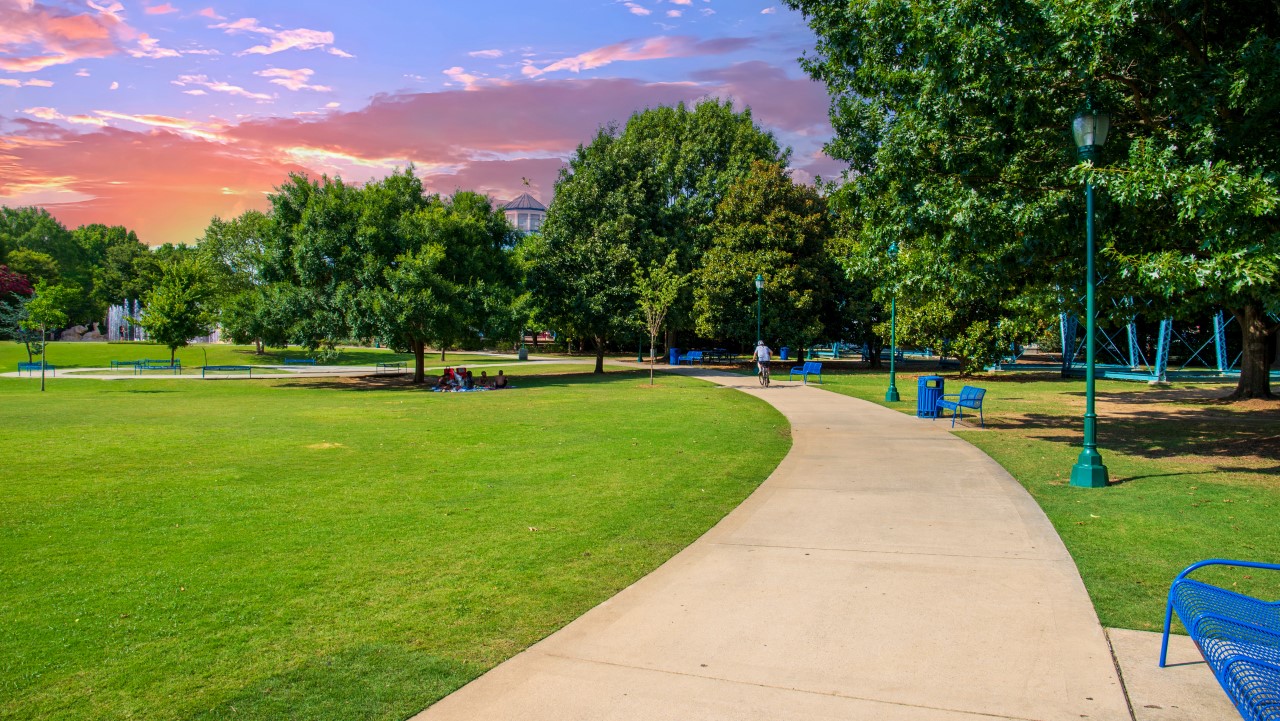
There is no question about it — we have reaped the benefits of connecting with others through social media and accessibility to remote work, especially during the pandemic. Despite the connectivity that technology offers, our communities are still battling an epidemic of loneliness. This presents an interesting juxtaposition: on the one hand, as a society we are more connected than ever, but on the other hand our communities are suffering from loneliness, which is linked to a decline in mental and physical health. While there is vast research on the causes, one commonality that ties everything together is the loss of accessible third spaces in our communities.
People of all ages desire community, connection, and belonging, and third spaces (also called third places) can fulfill those needs. According to the Brookings Institute, third places serve as community builders and provide residents the opportunity to access clean and often environmentally friendly places.
Recreation and parks are one way in which local government is actively involved in creating and maintaining third places for community building and engagement. Parks not only help build core memories for children and parents, but also serve as third places that can bring together all members of the community. However, the mere construction of parks is not enough; parks and recreation need to become a place of community engagement and recreation in order for them to become a true third place.
It is true that remedying loneliness can seem out of the realm of local government, especially since loneliness can be subjective and difficult to measure. While most of us are not licensed health professionals, we can review and reflect on the research that exists and find ways in which we as local government leaders can help build stronger, connected communities.
Benefits of Parks on Mental and Physical Health
Parks and open green spaces have served our communities as a third place throughout history. At the individual level, parks and recreation help promote healthier constituents through various recreational activities, trails, and green spaces. Community members living in close proximity to parks are more likely to utilize amenities and reap significant mental and physical benefits. Community members near recreational spaces are more likely to spend time outside and participate in vigorous or moderate physical activity.
In relation to impact on mental health, research finds that the mental health benefits of those living within .25 miles of a park are similar to a reduction in the unemployment rate of 2%, while those within .5 miles are three times more likely to use the park for vigorous or moderate physical activity. Additionally, the regular interactions that naturally occur in parks have been shown to have numerous potential benefits, including cultivating social cohesion, an improved sense of community, and interpersonal relationships that improve participation in clubs and organizations. Conversely, less green space in a community is directly related to an increase in loneliness and a perceived shortage of social support.
These findings serve as a call to action for local governments, specifically those in urban planning, community engagement, and parks and recreation. Parks and green spaces not only serve as a third place for communities, but can also improve mental health in communities. However, this happens only if parks are mindfully planned, intentionally integrated, and cultivated to be a community space.
One practical step for local government leaders is to begin by taking inventory of the number and location of parks and then identifying communities where these places are missing or inaccessible. Given that the benefits of parks being most felt by those who live within one mile, access is an important part of the equation. Despite evidence of its great benefits, millions of people across the country are not in close proximity to parks and recreation. One option would be to increase accessibility of already present locations, such as school fields, as Los Angeles County is doing. A second option might look like partnering with the county and state to receive grants to build new parks and refurbish old ones. Stockton, California, USA, will receive $7 million for just that purpose from state coffers, while Virginia and Texas in the United States have their own statewide initiatives to enhance parks. No community looks the same and not every local government has the resources and land space to build and maintain new spaces. However, recognizing the need for parks and the impact they can have on community well-being can inspire creative solutions.
Local Government and Public Engagement Impact
In addition to the direct correlation between parks and the improvement of community mental health, third places also serve as spaces for community engagement. These are the spaces where community members are gathering of their own accord, coming together as friends and neighbors. If local governments truly seek to design public engagement processes that meet community members where they are, they need to incorporate third places in the planning process.
Parks are naturally third places and provide great opportunities for building stronger connections with the community through pop-up engagement and community events. In the city of Los Angeles, California, USA, councilmember district offices, neighborhood councils, and city departments occasionally partner to host tree adoption events at local parks. These efforts encourage Angelenos to create healthier and environmentally friendly neighborhoods and encourage residents to engage directly with the local government officials serving their community. Other parks in Los Angeles host free or cost-friendly events, such as family-friendly movie nights, concerts in the park, and holiday festivals.
In Philadelphia, USA, the city has piloted a program called We Walk PHL between Philadelphia parks and recreation department, the city’s department of public health, and the Fairmount Park Conservancy. This program is designed not only to promote health and wellness but to also encourage residents to connect with others in their community and “park stewardship.”
Other recreation departments have taken steps to create healthier communities through park revitalization projects and encouraging community input. This is just as important as simply providing green spaces because it gives community members a voice in how their communities look. An example of this also comes from Los Angeles County with the city of San Fernando. Their parks and recreation department currently uses their digital platform and other means of engagement to encourage residents to participate in stakeholder engagement groups and park revitalization projects.
Conclusion
By prioritizing third places like recreation and parks, and encouraging community engagement, local governments can help foster strong communities and address the epidemic of loneliness. While we in local government cannot address and remedy all of the challenges that exist in our communities, we can find creative ways to use the tools at our disposal to help our communities grow stronger and more connected. In doing so, local governments can build stronger relationships with their community members that will ultimately lead to healthier and happier communities.

CELESTE BENITEZ is a recent graduate of the Pepperdine University School of Public Policy MPP program.

NATHAN PETERSON is a graduate student at Pepperdine University School of Public Policy, where he is specializing in state and local policy. He is also a graduate assistant for the Davenport Institute and president of the school's ICMA student chapter.
New, Reduced Membership Dues
A new, reduced dues rate is available for CAOs/ACAOs, along with additional discounts for those in smaller communities, has been implemented. Learn more and be sure to join or renew today!

